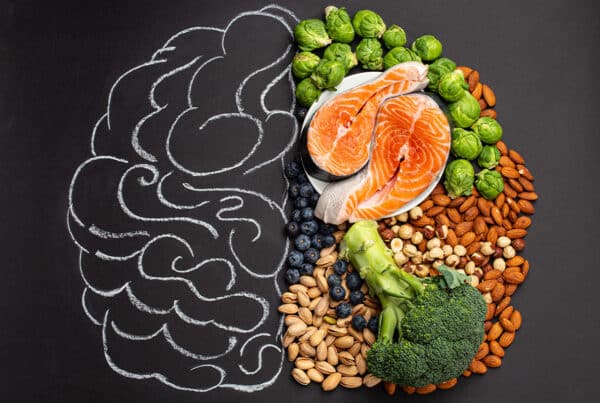In today’s connected world, social media affects nearly every aspect of all our lives—but especially teenagers and other young people. From connecting with friends to discovering new trends, teens rely heavily on platforms like Instagram, TikTok, and Snapchat to engage with the world around them.
While social media offers a sense of community and belonging, it also presents a unique set of challenges—particularly when it comes to mental health and the risk of substance abuse.
The Psychological Effects of Social Media on Teenagers
Social Comparison & Self-Esteem
Teenagers on social media often compare themselves to the idealized, highly unrealistic, curated lives they see online, which can lower self-esteem and increase anxiety.
This constant comparison contributes to mental health issues like depression, body dissatisfaction, and a negative self-image.
Cyberbullying & Mental Health Risks
From hurtful comments to spreading rumors, cyberbullying and other forms of online harassment can increase the risk of anxiety, depression, and suicidal thoughts.
The persistent nature of cyberbullying makes it particularly harmful, as it can follow teens home, and leave them feeling like they have no escape.
The Dopamine Effect: How Someone Becomes Addicted to Social Media
Social media addiction in teens is most often driven by a phenomenon called “the dopamine effect”. Dopamine is a key neurotransmitter in the brain’s reward system that our brains release in response to pleasing stimuli—in the case of social media, the stimuli include things like comments, likes, and shares.
Over time, the brain can become dependent on these kinds of stimuli, creating a cycle of instant gratification and compulsive use. When the brain doesn’t get what it craves, negative symptoms like anxiety, depression, and restlessness can develop.
How Social Media Influences Substance Abuse Among Teens
Exposure to Substance Use Through Social Platforms
Social media exposes teenagers to substance use, often portraying it in a glamorous or celebratory light through platforms like Instagram and TikTok. Alcohol, marijuana, and even harder drugs are frequently shown at parties and gatherings, creating a perception that substance use is not only common but harmless. For impressionable teens, constant exposure can increase the likelihood of experimentation, as they may feel pressured to emulate the behaviors they see online.

These platforms rarely show the negative consequences of substance use, such as legal troubles or long-term health effects. Instead, influencers and peers promote an idealized “highlight reel” that reinforces substance use as socially acceptable and desirable. Algorithms exacerbate the problem by amplifying content that users engage with, creating an echo chamber that normalizes these behaviors.
Peer Pressure in the Digital Space
Peer pressure has taken on more subtle forms in the digital age, where teens are constantly exposed to the actions and behaviors of their peers on social media. The illusion that “everyone is doing it” can push teens toward risky behaviors to avoid feeling excluded or judged.
Unlike traditional peer pressure, this influence is passive—but it’s also pervasive, subtly shaping behaviors over time.
Strategies for Parents and Guardians to Mitigate Risks

Encouraging Open Conversations About Social Media Use
Social media exposes teenagers to substance use, often portraying it in a glamorous or celebratory light through platforms like Instagram and TikTok. Alcohol, marijuana, and even harder drugs are frequently shown at parties and gatherings, creating a perception that substance use is not only common but harmless. For impressionable teens, constant exposure can increase the likelihood of experimentation, as they may feel pressured to emulate the behaviors they see online.
These platforms rarely show the negative consequences of substance use, such as legal troubles or long-term health effects. Instead, influencers and peers promote an idealized “highlight reel” that reinforces substance use as socially acceptable and desirable. Algorithms exacerbate the problem by amplifying content that users engage with, creating an echo chamber that normalizes these behaviors.
Setting Healthy Boundaries for Social Media Consumption
Establishing healthy boundaries around social media is essential for helping teens navigate the digital world without harming their mental health or behavior. Setting clear limits encourages balance and mindfulness, reducing exposure to harmful content and addictive behaviors. Involving teens in the process makes them more likely to embrace these boundaries.
Here are some effective ways to set boundaries:
- Designate phone-free times: No social media during meals, homework, or family time.
- Unplug before bedtime: Excessive screen time at night disrupts sleep, which is vital for mental health.
- Set daily time limits: Use smartphone tracking tools to monitor usage and prevent mindless scrolling.
- Encourage social media detoxes: Regular breaks, even for a day, can reset a teen’s relationship with social media.
- Lead by example: Parents should model responsible use of technology to reinforce these healthy habits.
By framing these boundaries as tools for promoting well-being, parents can help teens develop healthier digital habits.
Guiding Teens in the Social Media Era
It’s hard to overstate the impact social media has on teens’ mental health. The constant exposure to unrealistic comparisons, the pressures of online engagement, and the glamorization of risky behaviors can create a challenging environment for them to navigate on their own.
If you’re concerned about how social media might be affecting your teen’s mental health or if you suspect substance use, don’t hesitate to seek help.
At Enterhealth, we understand the complex relationship between mental health, substance abuse, and social media. Our comprehensive approach to treatment focuses on addressing both the mental health and addiction issues many teenagers face. Reach out to us for support and resources that can guide your family toward recovery and healing.




